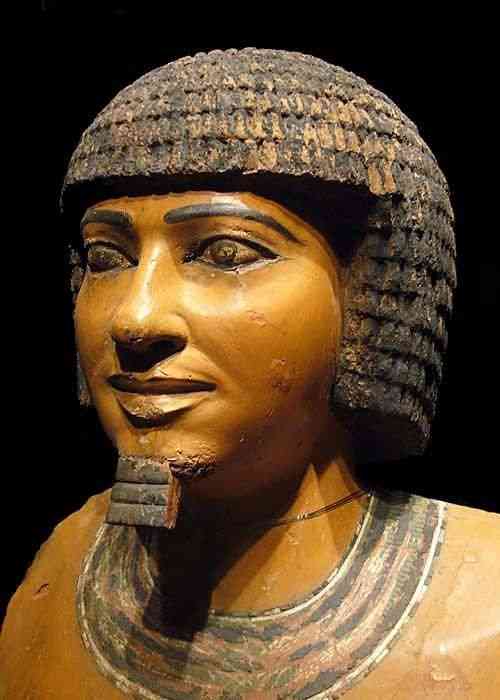I can say with confidence that “Imhotep” is one of the greatest minds that Egypt has given birth, but rather one of the greatest minds throughout the entire human and human history. For this reason, historians called it the “genius of the original world.”
“Imhotep” or “The man who came in peace,” as the meaning of his name will become clear, is the name of his name, so between his birth in peace, and his life that brought people peace, then his death after that in peace, where he left without a trace as if he did not exist in history a man with this name.
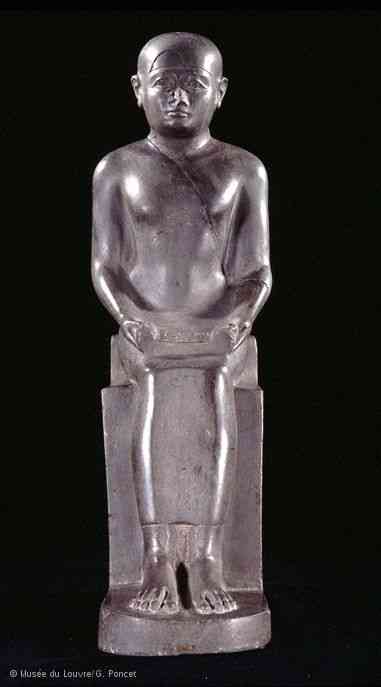
Imhotep the Engineer
Our great engineer, Imhotep was born in the village of “Ankhtowe” near the city of “Memphis”, the capital of ancient Egypt, whose current place is located in the city of Badrashin in Giza Governorate. He was born on the sixteenth day of the month of “Tel”, which is the third month of the harvest season, as on the Pharaonic calendar.
Imhotep was able to reach a high position in the royal palace because he was one of the very few people in Egyptian society who could read and write, and whose percentage constituted only about 1% of the whole society.
Imhotep then managed to graduate to senior positions until he reached out that the king appointed him as the highest government official and made him a minister and his advisor, and he was a political, religious, and scientific advisor to King Djoser. Rather, he reached the highest levels when he built the first pyramid in history, the Saqqara Pyramid, where the kings used to be buried in a little building above the ground called “The Mastaba”.
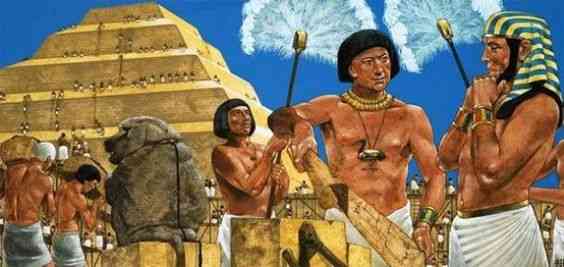
The Pharaonic Mastaba
The Egyptians used to bury their kings in a cemetery that took this form, until King Djoser and his great engineer, Imhotep, changed the face of the history of Egypt forever, and Imhotep built the first hierarchical pyramid known to mankind. Imhotep began building the pyramid in two phases that took twenty years, he started with a small pyramid, and then attached other parts to it to increase the size of the pyramid.
Because of the ingenuity of Imhotep's construction of this building, people have failed to construct a building like this for a hundred years, until they came after a whole century and began building the Great Pyramids of Giza, who relied in their design on the original design of Imhotep.
Not only was Imhotep interested in the visible and upper design of the pyramid, but he also paid great attention to what was under the pyramid, where the king would be buried. And to preserve the king's body and property from thieves; Imhotep created three-mile corridors under the pyramid, containing nearly four hundred rooms containing everything from drink, food, clothing, gold, and gems.
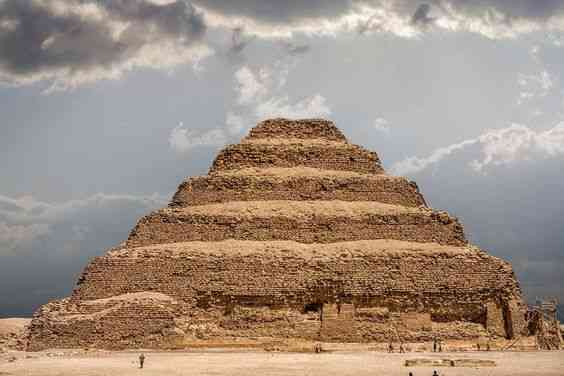
Imhotep made a complete maze under the pyramid, with long blocked roads, wrong paths, and closed doors, to protect everything inside the tomb from treasures, then came to the room where the king would be buried, and established it under a column reaching 90 feet under the ground, and closed it from all The windows placed on top of them a stone weighing three and a half tons.
Not only that, but Imhotep took great care of the shape and appearance of the pyramid with great care, so we can see how this masterful engineer introduced new elements in architecture, including the use of palm trunks and bundles of papyrus, as happens to this day in rural architecture. He also used the wooden gate and covered the walls with faience, which is the oldest faience tile in the world and characterized by high taste.

I have fixed this faience with two small holes in which a thread of linen or leather passes through, and each one is stacked next to the other in a shape similar to mats, and a portion of this faience wall is now preserved in the Egyptian Museum in Cairo.
As I mentioned before, Imhotep took up positions that no one had accessed before him, as he was the chancellor, priest, and minister of King Djoser, because as a priest, he is responsible for overseeing the mummification process, and here we will discover a new talent for our great engineer.
Imhotep the doctor
Imhotep mastered the mummification process, and he embalmed the king, and his mastery of the human body's anatomy and medical knowledge is prominently demonstrated in the remnants of King Djoser's body. When archaeologists entered King Djoser's tomb in 1934, they found his torso, right arm and left foot, and it appears clearly and clearly that the one who oversaw the embalming of the body is a person who is completely fluent and familiar with the sciences of the human body. He wraps the linen bandages around the body as best as possible.
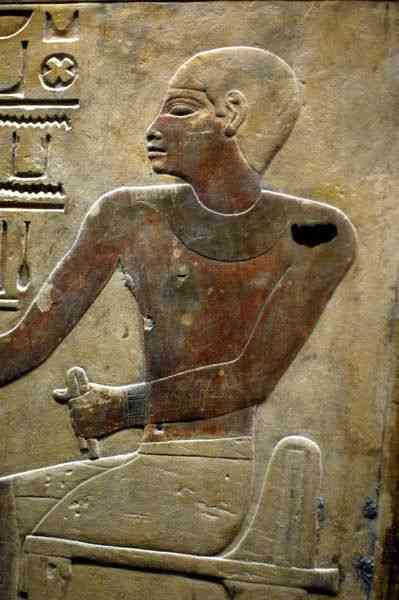
Not only that, but archaeologists have discovered archaeological evidence indicating that Imhotep had a wonderful and ideal laboratory and laboratory for the practice of medicine, as in 1990 he discovered a complex and collective burial of Egyptian workers who built the pyramids, and after I wrote them to the laboratories a recent examination of these structures showed an X-ray that they were For patients with injuries, the nice thing is that some of these injuries have already been treated.
Rather, they also found that some hand fractures were treated by splinting, but rather the most enjoyable and beautiful thing that some patients had their legs amputated, and were able to live for years after amputation of the leg, and this means that they received wonderful treatment and follow-up. Rather, let me give you the most important findings, which is monitoring patients who have suffered from cancer, and Egyptian doctors were able to perform the first surgical operation in history, and it was a hole in the skull to relieve the pain of those who suffer from cancer because of the tumors in their brains.
As the first pyramid in history, Imhotep seems to have treated the diseases that workers suffered and headed the first treatment center in the world. The Edwin Smith papyrus, named after its first owner, which is the oldest medical manuscript in the world, dating back to In the year 1600 BC, some scholars have suggested it was based primarily on the writings of Imhotep.
This papyrus is important because it describes forty-eight cases of applied surgery, from head and brain fractures to spinal cord injuries. Each of the cases mentioned is carefully researched in a logical system in the titles arranged from a provisional primary diagnosis, examination, and research into the common symptoms between different diseases, diagnosis of the disease, inference of its symptoms on its consequences and the way it is treated, then comments on the scientific terms contained therein and explanations thereof.
This means that Imhotep practiced modern medicine before Hippocrates, nicknamed "the father of medicine."
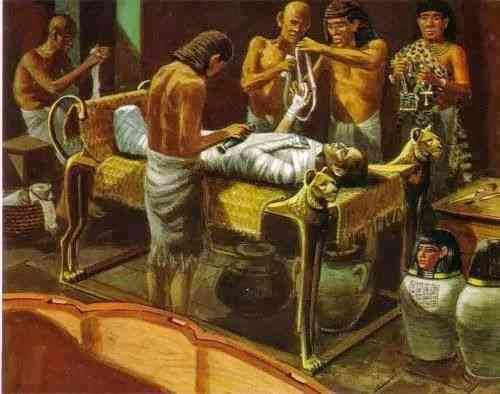
Not only did Imhotep practice medicine, but he also instituted the moral laws of medicine before Hippocrates as well.
"Do not make fun of a person with a disability, do not make fun of someone who has lost his sight, and does not laugh at the man whose mind is in the hand of God."
Hence the position that Imhotep placed on the mentally ill, as he never mocked them, but described them as their minds in the hand of God. Given this unparalleled craftsmanship that characterized Imhotep, it is sufficient to demonstrate this that all the statues made for him, all depict him sitting and in his hands a paper in which he reads. This indicates his keen interest in science because of this extraordinary ingenuity, people sanctified it over time. And Imhotep became the god of medicine and science 2000 years after his death in the Ptolemaic era, when the people of Greece also worshiped him, and they were traveling to his grave to seek recovery. Tales and legends spread about him until historians considered him a legend that does not exist. People continued to treat Imhotep as a fictional myth not found in history.
And to be sure of its true existence more and more, in 1926 the archaeological researcher “Khor Silsil” found the base of the statue of King Djoser, whose name was engraved with Imhotep, and which was nicknamed titles that no one else has attained.
Adviser to the king of Upper Egypt
The first after the king of Upper Egypt
Designer of the Great Palace
High Priest of Heliopolis
The builder of the Great Pyramid
The headmaster of the High Palace
All these titles were for one person, Imhotep, this engineer, doctor, and philosopher, and then the great Egyptian deity.
Imhotep the writer
Imhotep wrote many writings in many fields, and we must mention this man his preference over the ancient Egyptian language, and they said that he was the first to introduce verbs in the Egyptian language. At a time when the Egyptian language was a collection of images, and each of them had a meaning, the Egyptians faced a big problem when the number of images increased to exceed one thousand, and then they realized that the speech was not only names but also acts. It is not possible to use the image of the eye to infer it from the eye, and we also use it to mean the verb “see”.
Here, Imhotep entered to guide him instead, and he developed the uses of the images. If the image was added to a man after writing tools, then this was a sign of the "writer", while if a papyrus was added with the writing tools, then this would be a sign of the verb "writing" and not the "writer".
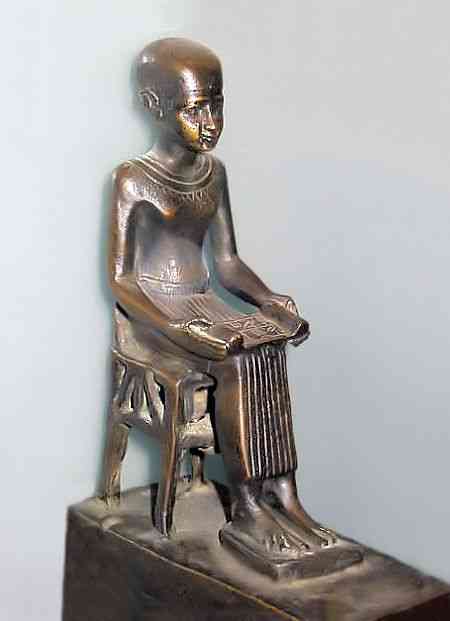
There is a literary text written by Imhotep, known as “The Song of the Fugitive,” which the Egyptians continued to chant until late periods in Egyptian history, which reveals some of the depth of thought and philosophy of Imhotep, who was able through his poems to teach a person the value of life, and how to make from sadness joy with joy.
"Everyone goes .. poor and noble ... and whoever claims divinity
What remains of the palaces after the absence of life?
Has any of them returned to us?
We know that no one will return, so let's say: This is beautiful, and let's be happy with it
And let us live with a feeling that comes from the heart, and we are always surprised, so we may catch happiness. "
He died
The history of Imhotep is mysterious in terms of his appearance and disappearance, despite the artistic creativity that brought him into architecture and his many medical discoveries, we find him disappearing strangely and mysteriously so that he did not mention anything about him as if he did not exist before !! What is even more surprising is the disappearance of his grave and the books that he wrote, which makes his disappearance in this mysterious form a mystery in itself! Archaeologists have been unable to find or find his grave, or even to find some of his books. We also find that the meaning of the name (Imhotep) raises mystery as well and becomes a mystery added to this character.
Thanks for reading!
Stay with us.
- Utopia Educators. Do subscribe to stay updated. Thanks
Sources:
1-https://www.ancient.eu/imhotep/
3-https://www.britannica.com/biography/Imhotep
4-https://4engineeringscience.blogspot.com/2012/12/blog-post_5798.html

